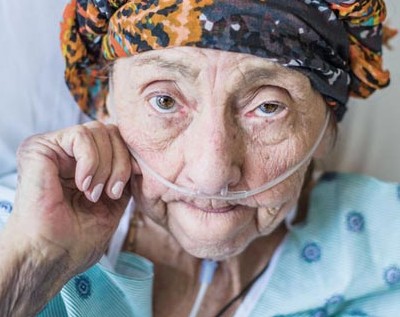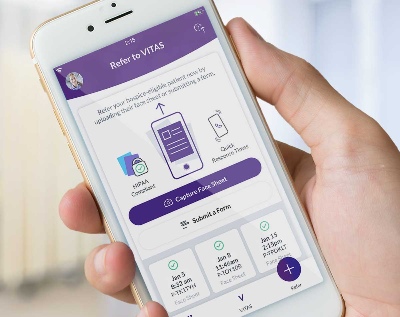Hospice Eligibility Guidelines for End-Stage Renal Disease (ESRD)
Download a PDF of these guidelines.
Are you a patient, family member, or caregiver? Learn about how VITAS can help patients with end-stage renal disease (ESRD).
Nearly 80 percent of Medicare patients on dialysis were hospitalized in the 30 days before death; they spent twice as many days in the hospital as patients dying of cancer.
With the assistance of VITAS, more people are given the option of living and dying in the comfort of home. Hospice helps to reduce hospitalization, minimize pain and symptoms, and improve quality of life.
The hospice plan of care for renal disease
The hospice plan of care for end-stage renal disease (ESRD) addresses the patient's physical and psychosocial well-being and seeks to manage a wide variety of kidney failure symptoms, including:
- Pain
- Fatigue
- Loss of appetite
- Nausea and vomiting
- Itching
- Difficulty breathing
- Difficulty sleeping
- Anxiety
- Depression
Withdrawing from dialysis, or choosing to forgo it altogether, is often an emotionally difficult process. Hospice offers emotional and spiritual support for patients and their loved ones.
Knowing when a patient with ESRD is ready for hospice care
When a patient is diagnosed with ESRD, the question the nephrologist or attending physician asks is, "What is the goal of care?" The goal is either to provide rehabilitative dialysis in order to maintain or improve function, or to provide palliative care.
Patients with ESRD are increasingly characterized by older age and multiple comorbid illnesses, and have a mortality rate eight times higher than the general Medicare population. Dialysis patients are appropriate for palliative care because of their high mortality rate and high symptom burden.
More patients and families are choosing not to start or to withdraw dialysis for multiple reasons, particularly in patients older than 60 years. Advance directives and resuscitation directives are important in ensuring compassionate and goal-directed palliative care of ESRD patients.1 Making these choices is often an emotionally difficult process. Hospice offers emotional and spiritual support for patients and their loved ones.
Common indicators of end-stage renal disease:
- Uremia
- Confusion, obtundation
- Intractable nausea and vomiting
- Generalized pruritus
- Restlessness, "restless legs"
- Oliguria: urine output <400 cc/24 hrs
- Intractable hyperkalemia: persistent serum potassium >7.0
- Uremic pericarditis
- Hepatorenal syndrome
- Intractable fluid overload
Other indicators and symptoms:
- Patient refusing dialysis or stopping dialysis
- 25%–30% of patients on dialysis who are declining with other comorbid disease, such as cancers, end-stage heart disease, end-stage lung disease
- Weight loss
- Functional decline
- Cognitive decline
- Social withdrawal
- Uncontrolled pain
- Frequent nausea
- Increasing weakness
- Orthostatic hypotension
- Dehydration
- Decreasing muscle mass
- Impaired immune function
- Increase in infections
- Decrease in sympathetic response to stressors
Laboratory findings:
- Creatine clearance of <10cc/min (<15 cc/min for diabetics)
AND
- Serum creatine >8.0 mg/dL (>6.0 mg/dL for diabetics)
VITAS provides these guidelines as a convenient tool. They do not take the place of a physician's professional judgment.
Source:
- Werb R. “Palliative Care in the Treatment of End-Stage Renal Failure." Primary Care. 38(2):299-309.

